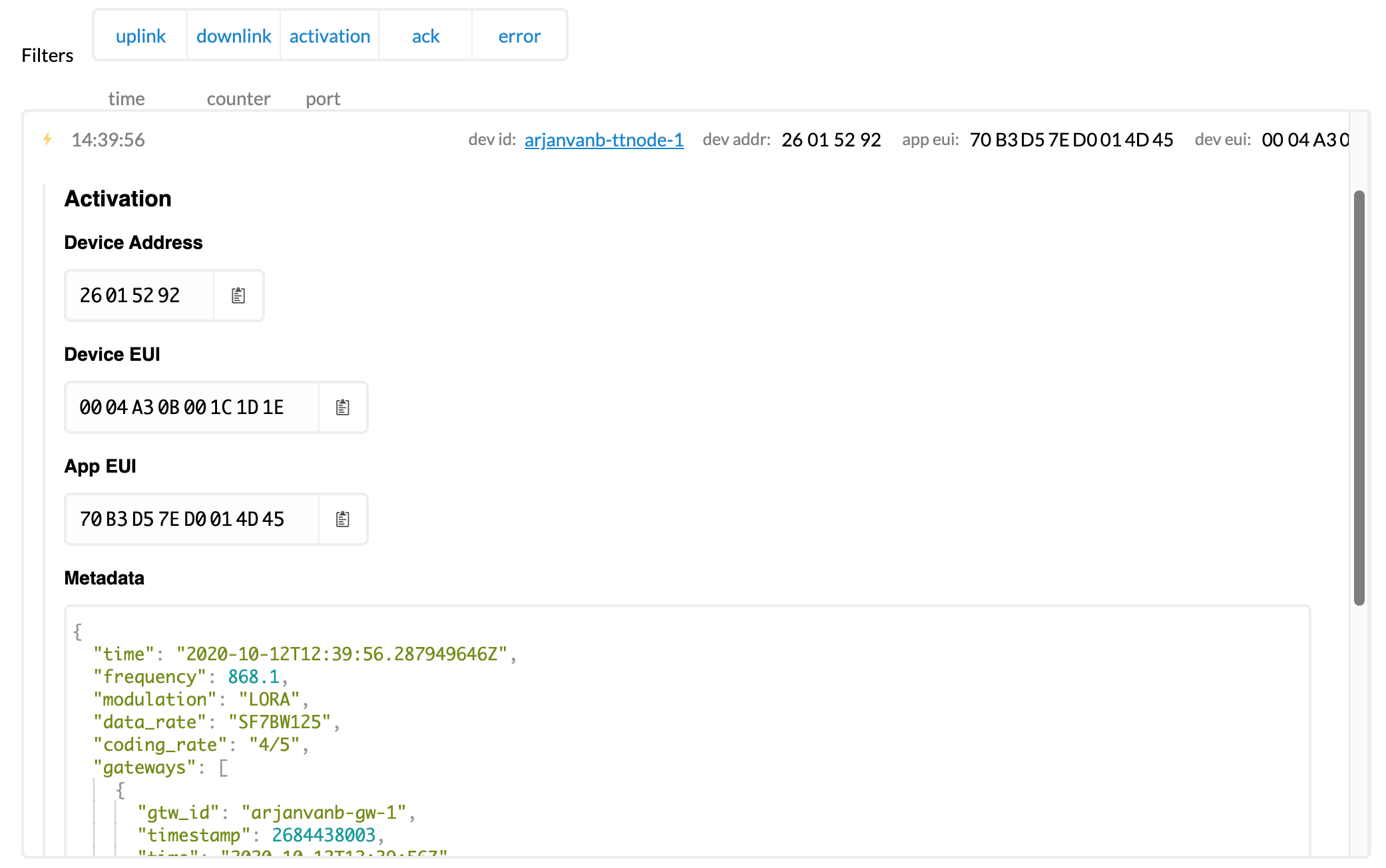It’s in the metadata when clicking the Activation, in "gtw_id": "arjanvanb-gw-1" below:

Also, when subscribing to the device events (or simply the wildcard #) of the MQTT Data API, you’ll also get it:
{
"app_eui": "70B3D57ED0014D45",
"dev_eui": "0004A30B001C1D1E",
"dev_addr": "26012B0F",
"metadata": {
"time": "2020-10-12T12:39:03.735498171Z",
"frequency": 868.5,
"modulation": "LORA",
"data_rate": "SF7BW125",
"airtime": 25856000,
"coding_rate": "4/5",
"gateways": [
{
"gtw_id": "arjanvanb-gw-1",
"timestamp": 2632004427,
"time": "2020-10-12T12:39:03Z",
"channel": 0,
"rssi": -49,
"snr": 6.5,
"rf_chain": 0
}
]
}
}